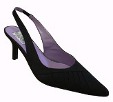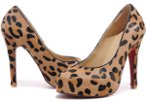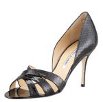Footwear Basics
Tips on Choosing Shoes – Consider Fit and Style
Shoes can make or break an ensemble. In addition to choosing the right style and fit, caring for your feet and your budget are also essential considerations. Shoes are an investment therefore buy the best you can afford.
Tips on Choosing Shoes:
You need several pairs of shoes to maintain healthy feet.
Buy footwear in mid-afternoon when your feet are at their largest. Choose a style which suits your foot shape (do not force your feet into ill-fitting shoes). Be sure to allow some space between the end of your longest toe and the end of the shoe and ensure that the width fitting is correct. When buying shoes don’t expect tight shoes to loosen up.
Look for shoes that are made of leather or canvas.
Make sure the lining is smooth. To achieve the best fit, when shopping for footwear, bring the socks with you that you plan to wear with the shoes. If you have large feet or heavy legs, choose more tailored styles with thicker heels. If you have small feet or thin legs, opt for dainty styles with thinner heels. Colored or heavy looking shoes will call attention to your feet.
Shoes and handbags don’t have to match. But match casual type footwear with casual handbags, etc.
Choose shoes for the intended activity. For example: hiking boots for outdoor activities such as hiking.
Wearing the same color pants or the same color legwear and shoes makes your legs look longer.
Heel Heights
It’s best to have a variety of heel heights to help counter the effects of the raised heels. Be sure to have a pair of closed-toe pumps in your foundation color/neutral (black, navy or taupe (cool) or dark brown or beige (warm). Shoe color should be the same value or darker than your hemline.
Heels that are 1-1/2 – 2″ flatter most legs.
For business a 3″ heel is the maximum height.
If you are heavy, short, or short legged wear a higher heel 1″ or more. A little heel will make you look taller and trimmer.
Stilettos force the foot into an unnatural position and throw the body out of its natural alignment. This can lead to back and neck problems.
The more foot that shows, the less businesslike the shoe. Sandals, mules, flip-flops, and T-straps are not appropriate for traditional businesses.
Closed-toe, sling back pumps are generally acceptable in most business settings.
Questions to Ask Yourself Before You Purchase Footwear:
- How much wear will I get from these shoes?
- Will they last more than one season?
- Do they go with at least three outfits or more in my closet?
Check Out the Seal:
The American Podiatric Medical Association
Tips For Getting A Proper Shoe Fit
We walk miles over our lifetime making it necessary to have proper fitting shoes to keep our feet healthy. Feet that hurt are caused by wearing footwear that does not fit well and limits our ability to enjoy walking, hiking and other activities as we age.



